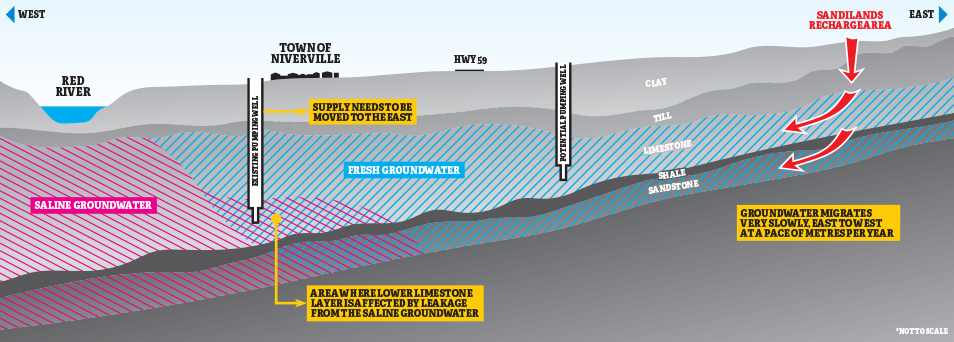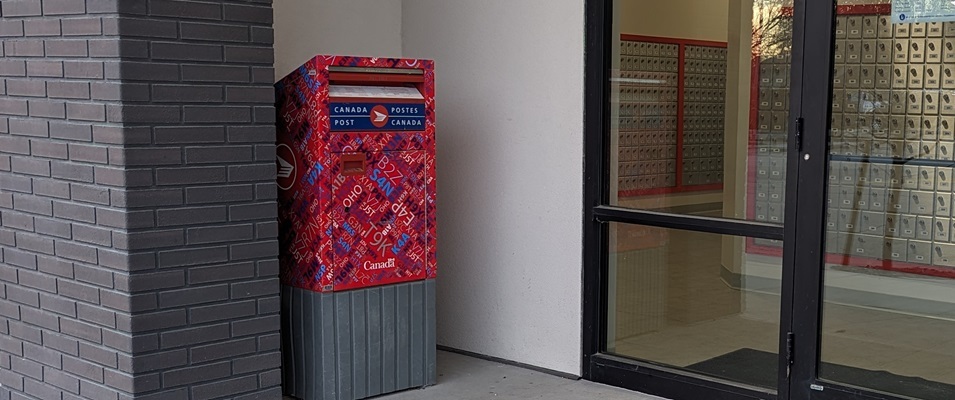
An informational open house was held on September 22 at the Niverville Heritage Centre to inform Niverville and surrounding area residents about the process of locating a new water supply to sustain the needs of this growing community.
Hosting the event were Friesen Drillers Ltd. of Steinbach and Landmark Planning & Design Inc. (LP&DI) of Winnipeg, contracted by the Town of Niverville to perform the studies required to locate a new well site. Professionals from both companies were onsite to answer questions and alleviate any concerns the community may have going forward.
Earlier this summer, town council shared concerns about the existing wells which supply the Spruce Drive treatment plant, in turn supplying water to The Highlands, Fifth Avenue Estates, and Prairie Crossings. On numerous occasions, it became apparent that the existing wells were not able to keep up with growing demand, resulting in council’s request to residents to alternate lawn-watering days.
“The initial wells constructed in 2002 were designed for a very small subdivision,” says Jeff Bell, hydrogeological engineer for Friesen Drillers. “I am certain that no one [back then] was sure how things would work and how fast things would develop. When [residential growth occurred], the wells began to pump at higher rates. Unfortunately for the site, the wells encountered large sand-filled sinkholes in the limestone bedrock. When pumping at lower volumes, the sand did not lift. When pumped at higher volumes, the sand began to lift, creating treatment and turbidity problems.”
Apart from sandy sinkholes beneath us, a second problem lies in the salinity (dissolved salt content) of the underground water directly beneath and to the west of
Niverville. The closer to the Red River, the higher the salinity. Fresh water appears in greater abundance to the east, providing cleaner options.
“West of Niverville, the carbonate aquifer becomes saline naturally,” says Bell. “This is very old water that was forced into the formation many years ago. To the east, freshwater is recharged into the aquifer from the Sandilands area. This is why we need to go east for a water supply of a high capacity for Niverville.”
In terms of individual homeowner wells, Bell says there is no problem pumping from the aquifer beneath us. “It might be just fine to pump lower volumes [as is the case with wells that service just a few homes], but when we are talking of pumping larger volumes for a town, we need to go where the aquifer offers the freshest water supply.”
For this reason, a target study area has been established east of Highway 59 and several miles north and south of Highway 311. The study area shows promise based on existing wells in the area that are providing quality water both at low-volume and high-volume demand and without disturbing agriculture.
The study, expected to be completed by fall of next year, includes applying for groundwater exploration permits, completing a test drilling program, assessing the effects both to the quality of the new well and existing wells, preparing reports and license applications, and finally construction if the tests prove positive and licenses are granted.
Since early summer, LP&DI have been meeting with stakeholders—homeowners and landowners, rural municipality councils, and others in and around the proposed testing area—to educate on the process and gain permission to proceed.
“We’ve had excellent participation—over 90 percent—and solid feedback from residents and landowners in the study area,” says Donovan Toews of LP&DI. “None have suggested that we should not conduct our research in order to determine if there is a reliable and sustainable water source in the area. Most have expressed appreciation for the method of consultation thus far. We have committed to ongoing sharing of our findings as we move along.”
Because the process will take time, LP&DI recommend interim solutions to the Town of Niverville in managing their existing water supply. These include making technical adjustments to treatment to reduce fine particles in the water, making no new connections to the existing supply, eliminating cyclical (start-stop) pumping for now, and implementing conservation measures.



















